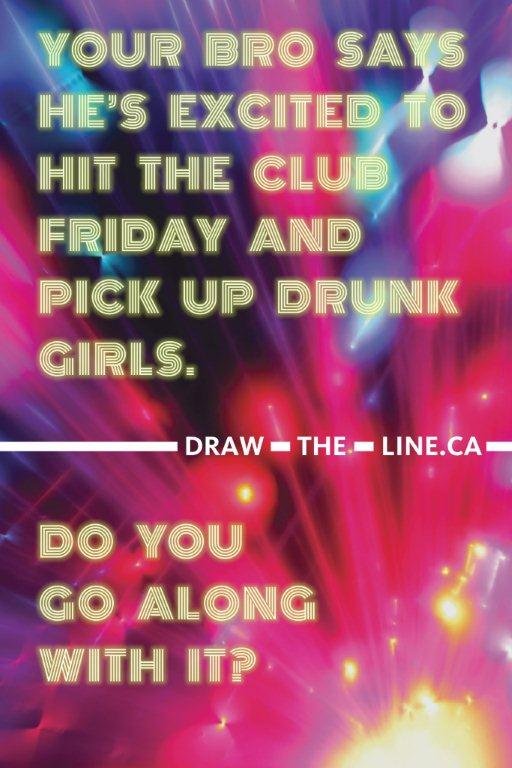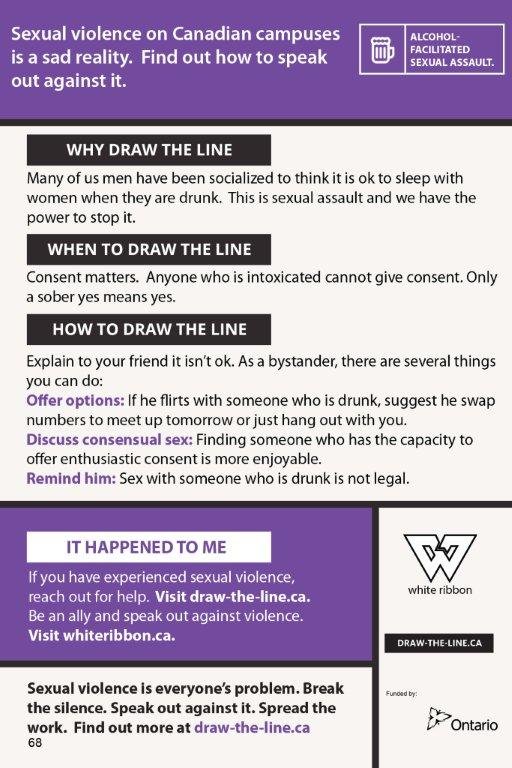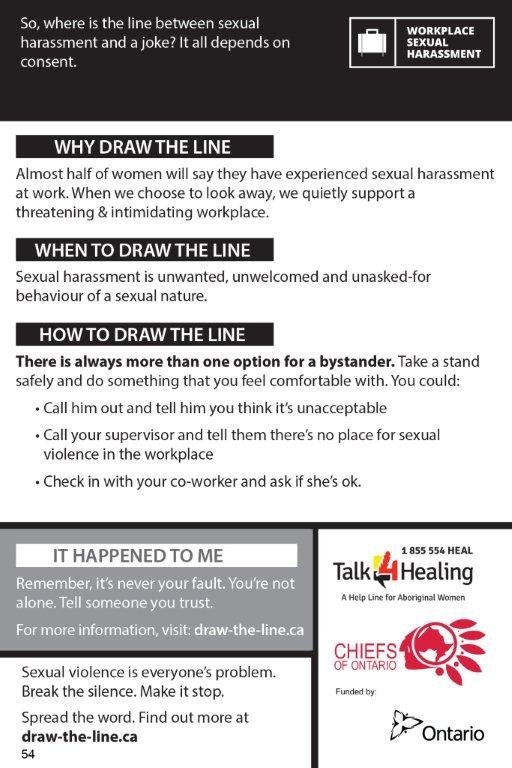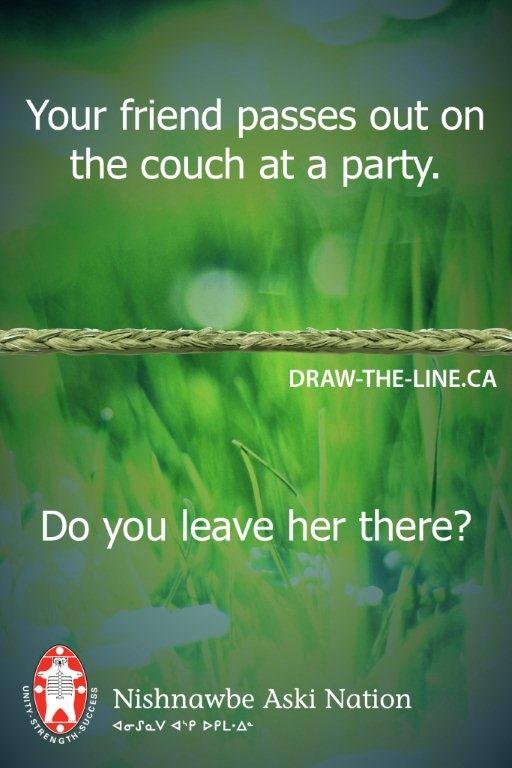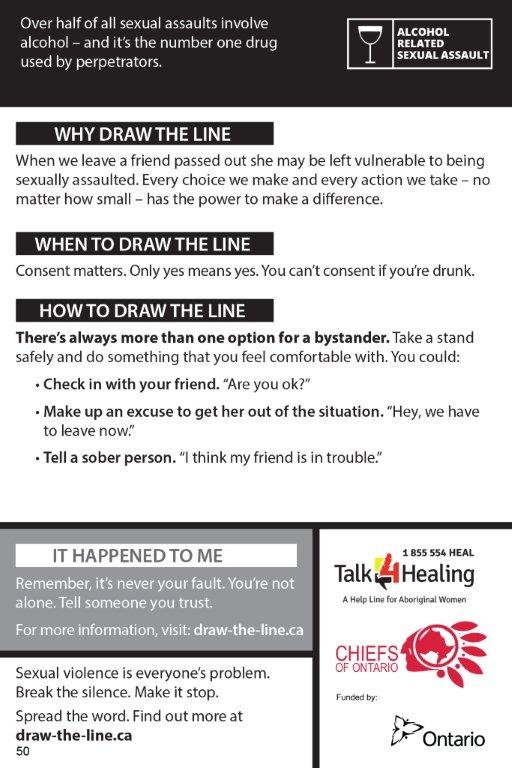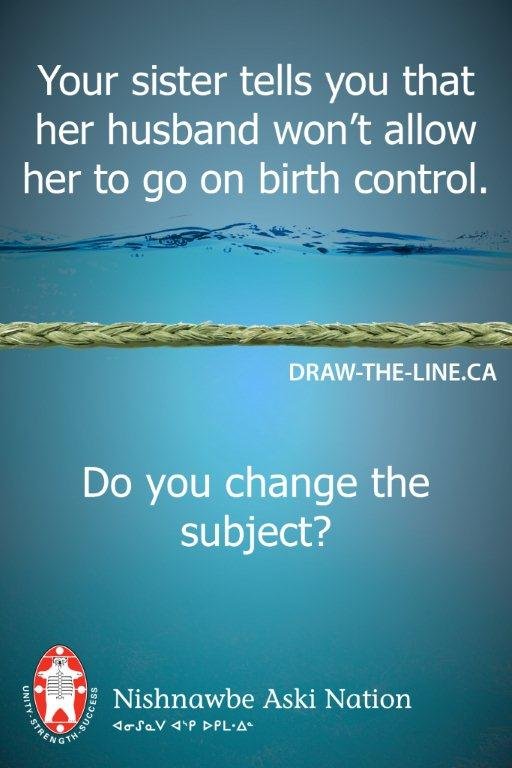Bystander Intervention
For May, Sexual Violence Prevention Month, DWS will be posting more info about sexual violence, prevention, and consent.
Image description: Digital image on purple background with illustrations of many people and text, “Bystander Intervention, #SVPM, @DWS_EndViolence, dawsonwomensshelter.com”
Get skilled
You can interrupt sketchy behaviour at a bar, concert, or a party to prevent sexual violence
We’re Often Asked
What should I do if I see:
my boss commenting on a coworkers body?
someone hitting on someone at a bar and not taking ‘no’ for an answer?
my friend joke about getting girls drunk so they will have sex with him?
a teammate casually mention that ‘you gotta put women in their place?’
We know that feeling in our stomach when something is wrong, but very rarely are we taught the skills to interrupt behaviour that can lead to sexual assault or partner violence.
Why Bystander Intervention?
Image description: Picture of a city skyline and sunset reflected in water with text, ‘I am no longer accepting the things I can cannot change. I am changing the things I cannot accept.’ - Angela Davis
Bystander intervention is research-based and effective!
Bystander intervention shifts sexual violence prevention to being a community problem where everyone can take action, instead of expecting survivors to prevent violence.
Bystander intervention is action oriented and a way for folks not being targeted to be involved in prevention.
Past sexual violence prevention strategies based on rape myths have not been effective at lowering rates of sexual violence.
Shows support for survivors. Often when violence or harassment is happening in public places, survivors are frustrated that people could see what is happening and no one came to help.
Bystander intervention skills are transferable, working to interrupt not only sexual violence but also other forms of oppression: racism, homophobia, ableism, and more.
Bystander intervention is part of building consent culture.
When bystanders are silent, the person who has done harm may think that such behaviour is acceptable. - From Simon Fraser University, Sexual Violence Support and Prevention Office
Shows that our community, workplaces, schools, streets, locker rooms, bars, and restaurants are spaces where sexual violence is not tolerated.
VIolence is everyone’s issue
Because of the ridiculously high rates of violence, we can’t assume that abuse doesn’t happen in our communities, to our friends, in our schools, and at our workplaces.
There are useful and proven skills that we can use to interrupt behaviour that is either abusive or can lead to violence.
Moving to Upstanding
Social psycologists break the bystander effect into two parts:
“The perceived diffusion of responsibility means that the more onlookers there are, the less personal responsibility individuals will feel to take action. Social influence means that individuals monitor the behavior of those around them to determine how to act.”
From Psychology Today
From the American Psychological Association:
An upstander is a bystander who recognizes acts or utterances of injustice and takes a stand by interrupting and challenging situations that normalize discrimination and potential violence.
Upstanding in 5 Steps:
Notice a discriminatory/emergency situation and interpret it.
Evaluate the incident’s problematic nature and decide if it requires intervention.
Assume responsibility for intervening.
Know and decide how to approach the situation.
Choose to take action.
Start Early
“The standard you walk past is the standard you uphold.”
But it’s just words!
We hear that all the time. Not only can words truly hurt, but also, if something racist, sexist, homophobic, or otherwise harmful is said and left to pass, not only does the person doing the harm assume that that behaviour is welcome in that space, but others who hold those harmful beliefs will also believe that their racism, sexism, homophobia, etc. will be welcome.
It’s hard at first, but essential to create a culture of consent and equity in small ways as well as giant ways.
Calgary Communities Against Sexual Abuse created this great infographic about the link between oppressive thoughts and words to more physical forms of violence.
Image description: Digital image, illustration of a pyramid. Text at bottom, ‘Attitudes & Beliefs: racism, sexism, ableism, homophobia’. Middle text, ‘Verbal Expression: sexual harassment, making sexual joke, bragging’. Top text: ‘Physical Expression: sexual assault - level 1, level 2, level 3’
Created by Calgary Communities Against Sexual Abuse
It’s not always a direct line between degrading words about women’s bodies to rape, but oppressive attitudes and beliefs create an environment where sexual violence is expected and the norm as well as a culture where it is extremely difficult for survivors to talk openly about their experiences of violence.
Image description: Text, ‘In a rape culture, people are surrounded with everyday images, languages and laws, and other everyday phenomena, that validate and perpetuate rape. Rather than viewing the culture of rape as a problem to change, people in a rape culture think about the persistence of rape as ‘just the way things are.’
Definition by FORCE: Upsetting Rape Culture
Step Zero
Image Description: Infographic with a large wheel and text. “There are 460 000 sexual assaults in Canada every year. Out of every 1000 sexual assaults:
33 are reported to the police
29 are recorded as a crime
12 have charges laid
6 are prosecuted
3 lead to conviction
997 assailants walk free
Source: Johnson, “Limits of a Criminal Justice Response:Trends in Police and Court Proecessing of Sexual Assault,” in Sheehy, Sexual Assault in Canada: Law, Legal Practice and Women’s Activism, 2012
Image created by YWCA Canada
Because our culture doesn’t yet understand what sexual violence is, it’s essential to learn more about:
the myths we’re taught about sexual assault and partner violence, and
A great and easy way to make this part of everyday learning is following incredible consent activists and educators on social media.
First Aid
These skills are new for lots of folks! Just like first aid, these strategies require learning, relearning, and practice before being used in the field.
Based on material created by Right to Be:
Image description: Digital image with text that is also in the body of the blog post.
Delegate
Gather your people. Who can help? A friend? Security staff? Even if it's just to validate your concerns.
"I think she needs our help, but I don't know what to do. Have any ideas?"
"Will you keep an eye on me while I go chat with them?"
Image description: Digital image with text that is also in the body of the blog post.
Direct
Approach either the person being targeted or the person doing the harassing and be direct.
"Are you OK?"
"Can I help you?"
"That's not OK."
"You need to stop."
Image description: Digital image with text that is also in the body of the blog post.
Distract
Think of a way to distract the folks involved in the situation: either the person being targeted or the person doing the harassing.
"Can you take a pic of my friends and I?"
"What time is it?"
"Where's the washrooms?"
"That's a FAB outfit! Where did you get it?"
"My friend's gone missing. Can you help me find them?"
Image description: Digital image with text that is also in the body of the blog post.
Document
Make a record or keep your eye on the situation in case it escalates. Take a picture or a video and share it with your manager.
Image description: Digital image with text that is also in the body of the blog post.
Debrief
Sexual violence prevention can be hard work. Connect with someone you trust to chat.
DWS has got your back. You can call DWS’ 24 Hour Support Line from the bar or party to chat about ways to safely interrupt sexual violence or call after an intervention - 867.993.5086.
SOMEONE STOLE YOUR WALLET?!?!
Hip hop artist, Jay Smooth’s, “How to tell someone they sound racist video” is endlessly useful. The skills he shares, focusing on the impact not the intent, are useful for calling someone in on a racist joke, or their casual misogyny, or rape myths they might be repeating.
Bystander Intervention Resources
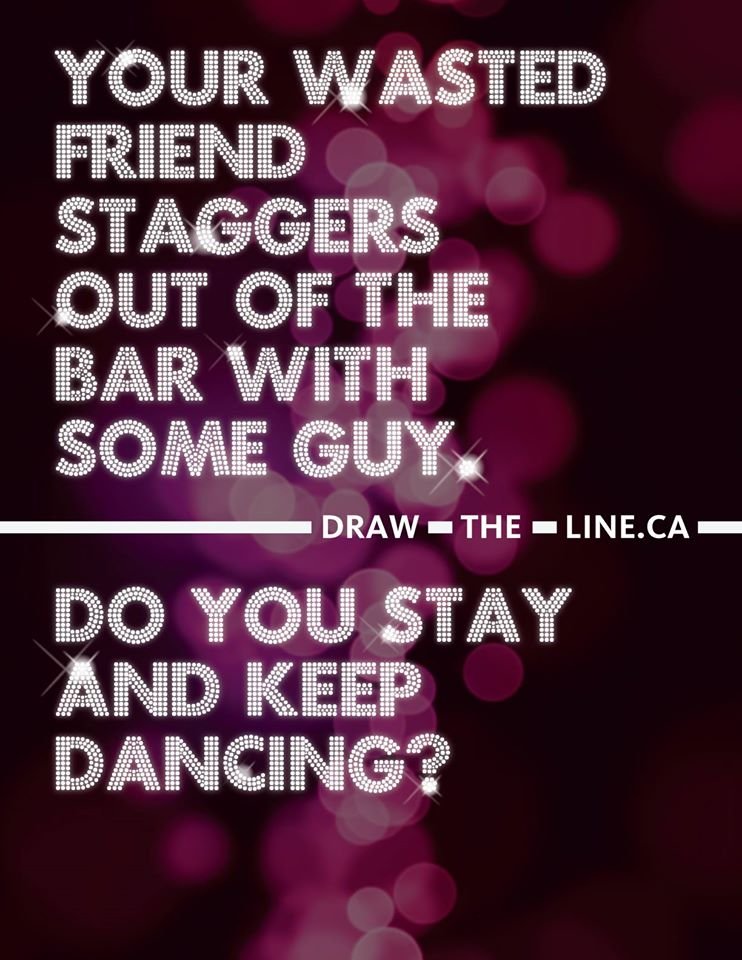
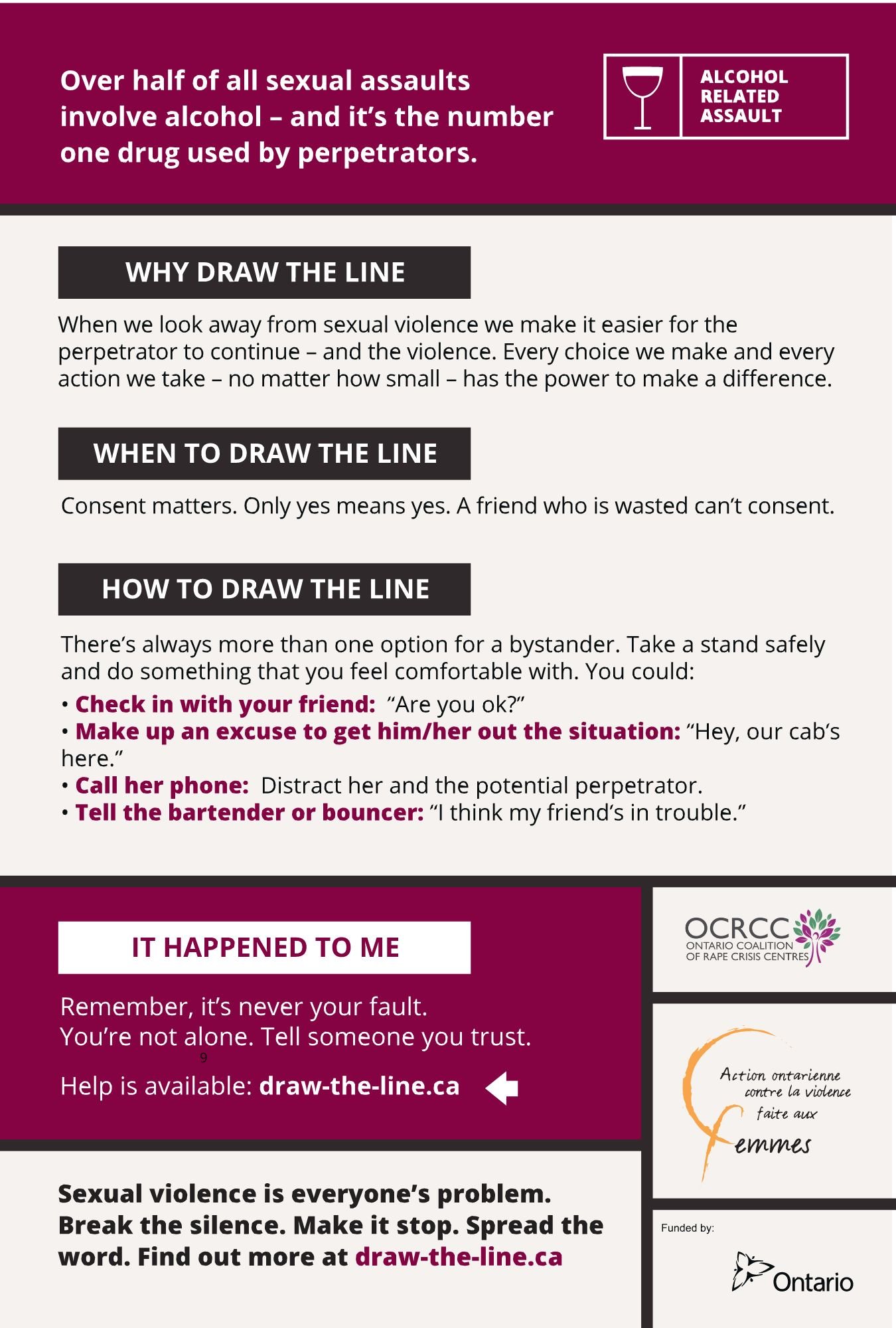
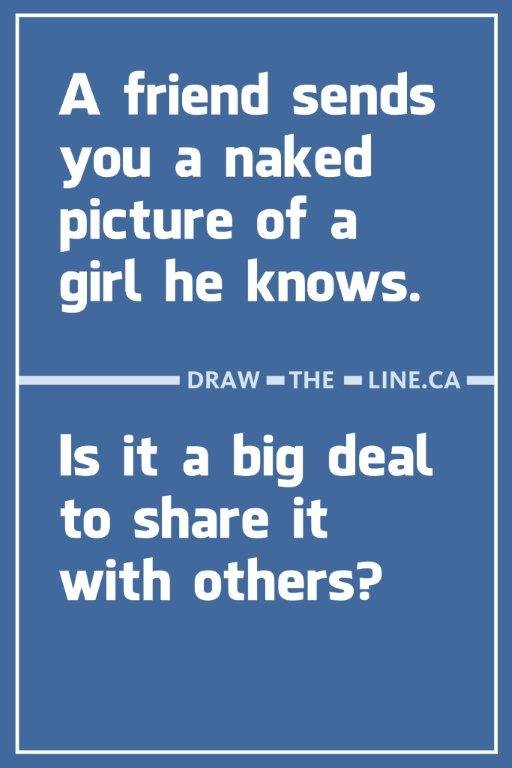
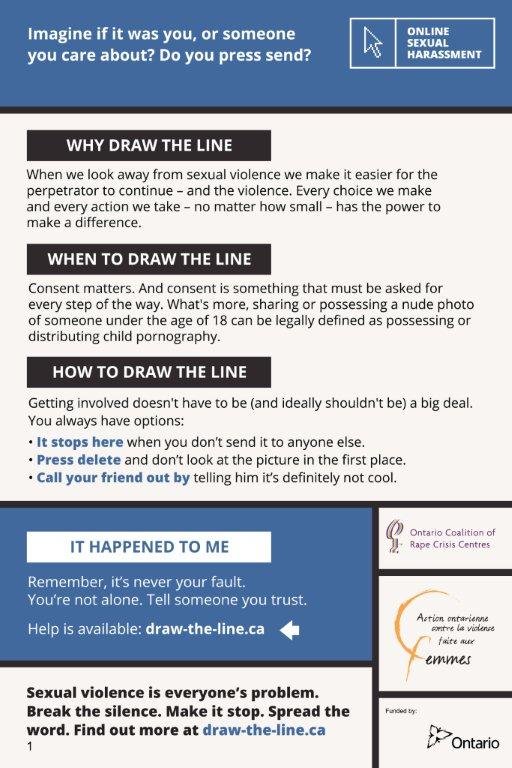
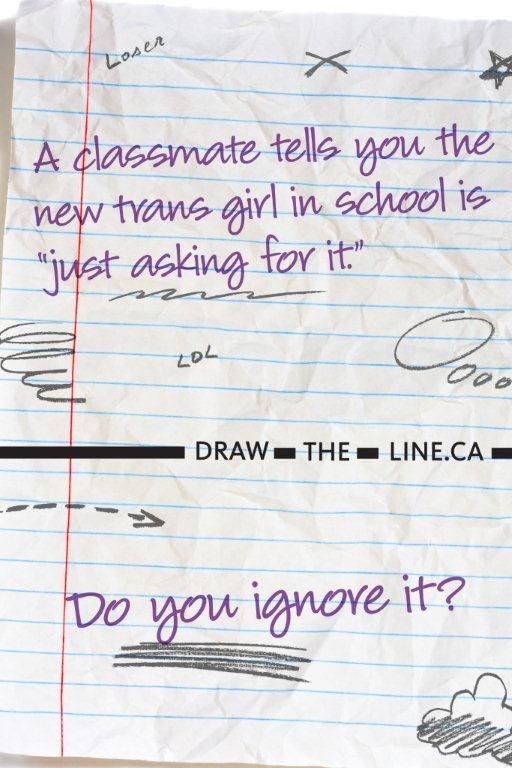
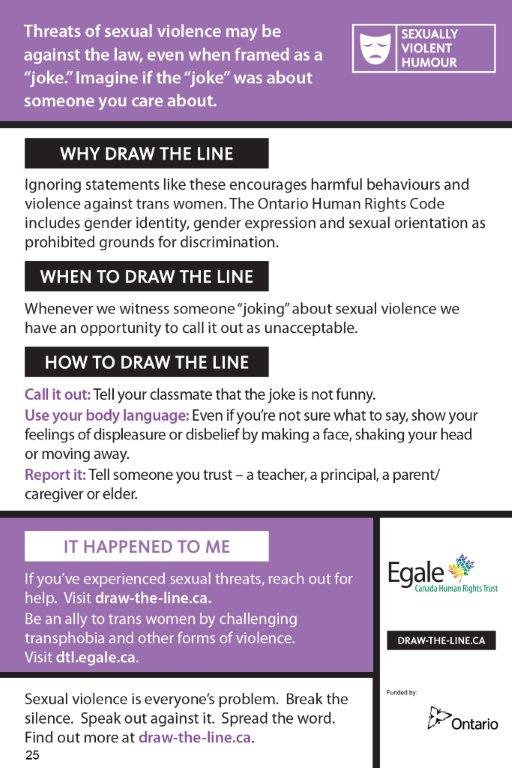
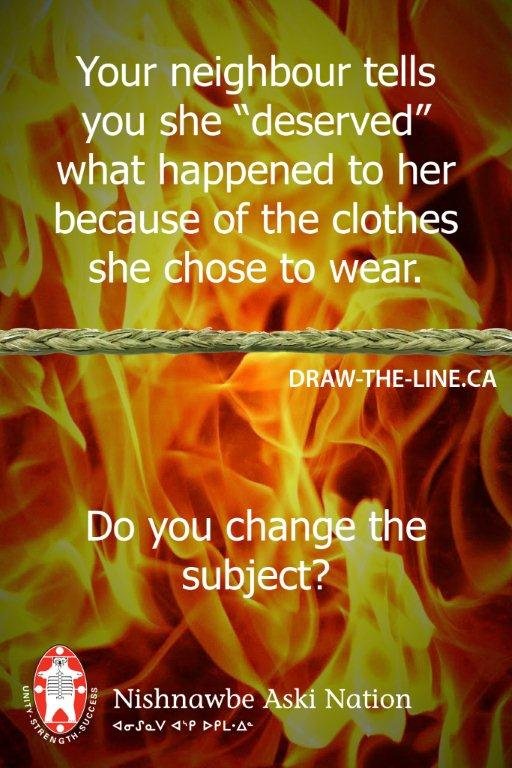
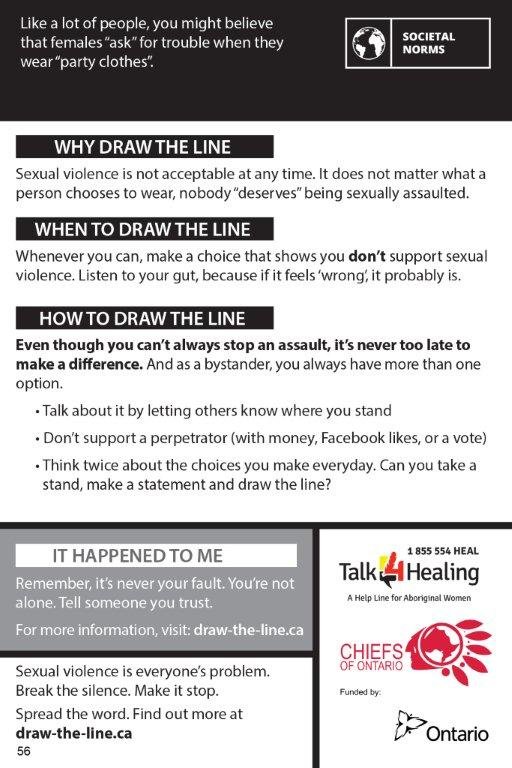
Draw the Line is a scenario-based bystander intervention campaign created by the Ontario Coalition of Rape Crisis Centres and Action ontarienne contre la violence faite aux femmes.
Project Soundcheck is a free guide to preventing sexual violence at music festivals created by Kira-Lynn Ferderber.
Julie Lalonde is offering FREE bystander intervention trainings on zoom. Register at Right to Be.
Nervous? That’s Normal
DWS has got your back, whether it’s inviting us to do a bystander intervention workshop for your group or calling our 24 hour support line to chat about intervention skills!
MORE SUPPORTS
YUKON SUPPORTS
Women’s Shelters:
Whitehorse
24 Hour Crisis Line - 867.668.5733
Dawson City
Dawson Women’s Shelter
24 Hour Support Line - 867.993.5086
Watson Lake
24 Hour Crisis Line - 867.536.7233
SART - Sexualized Assault Response Team
24 hour Yukon-based support for someone who has been sexually assaulted or their supporters. 1-844-967-7275
Website: yukon.ca/en/sartyukon/home
Victim Services provides help for victims dealing with a range of different crimes. It does not matter whether the victim has reported the crime, a charge has been laid or if there has been a conviction. We provide services to all people affected by a crime.
Whitehorse - 867-667-8500
Dawson City - 867-993-5831
Website: yukon.ca/en/legal-and-social-supports/supports-victims-crime/find-out-about-victim-services
CMHA Reach Out Support Line operates from 10am to 2am seven days a week with trained volunteers who will listen, support and help callers find options. 1-844-533-3030
Website: yukon.cmha.ca
Mental Wellness and Substance Use Services provides a variety of services, including individual counselling, outreach services, and community support. 1-866-456-3838
Website: yukon.ca/en/places/mental-wellness-and-substance-use-services
Tr’ondëk Hwëch’in Support Centre
Wellness is an important part of our spirit. The TH Wellness team uses a traditional approach to help our citizens. 867.993.7100 x164.
Website: trondek.ca/health.php
CANADA-WIDE SUPPORTS
Assaulted Women’s Helpline
Toll-free: 1 866-863-0511
Website: awhl.org
Missing and Murdered Indigenous Women Support Line a national, toll-free 24/7 crisis call line providing support for anyone who requires emotional assistance related to missing and murdered Indigenous women and girls. 1-844-413-6649
Website: rcaanc-cirnac.gc.ca
National Indian Residential School Crisis Line provides 24-hour crisis support to former Indian Residential School students and their families toll-free at 1-866-925-4419.
Website: sac-isc.gc.ca
Hope for Wellness Help Line is available to all Indigenous peoples across Canada who need immediate crisis intervention. Experienced and culturally sensitive help line counsellors can help if you want to talk or are distressed. 1-855-242-3310
Website: sac-isc.gc.ca
TransLifeline’s Hotline is a peer support service run by trans people, for trans and questioning callers. Our operators are located all over the U.S. and Canada, and are all trans-identified. We will do our best to support you and provide you resources. 1-877-330-6366.
Website: translifeline.org
Crisis Services Canada is available to all Canadians seeking support. If you or someone you know is thinking about suicide, call the Canada Suicide Prevention Service at 1-833-456-4566 (24/7) or text 45645 (7PM - 3AM PST).
Website: suicideprevention.ca
Kids Help Phone is available 24 hours a day to Canadians aged 5 to 29 who want confidential and anonymous care from professional counsellors. Call 1-800-668-6868 (toll-free) or text CONNECT to 686868
Website: kidshelpphone.ca










